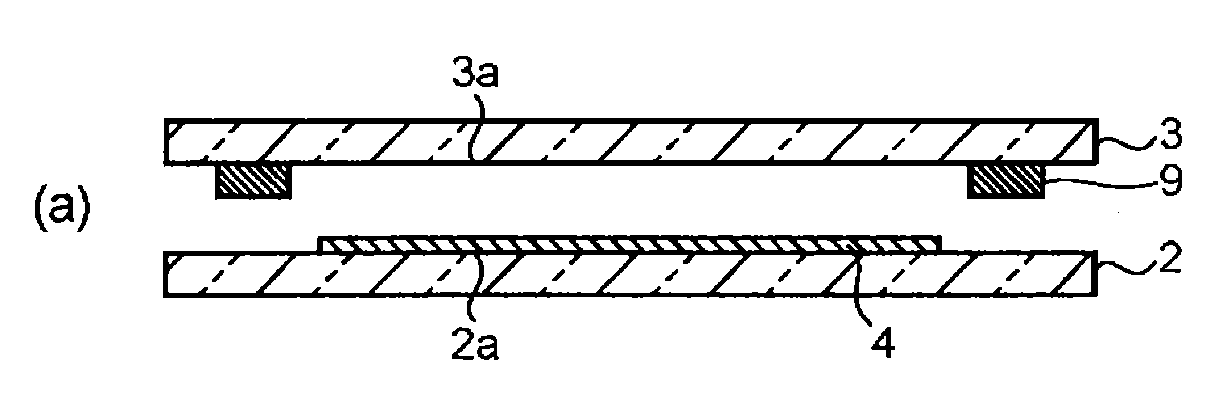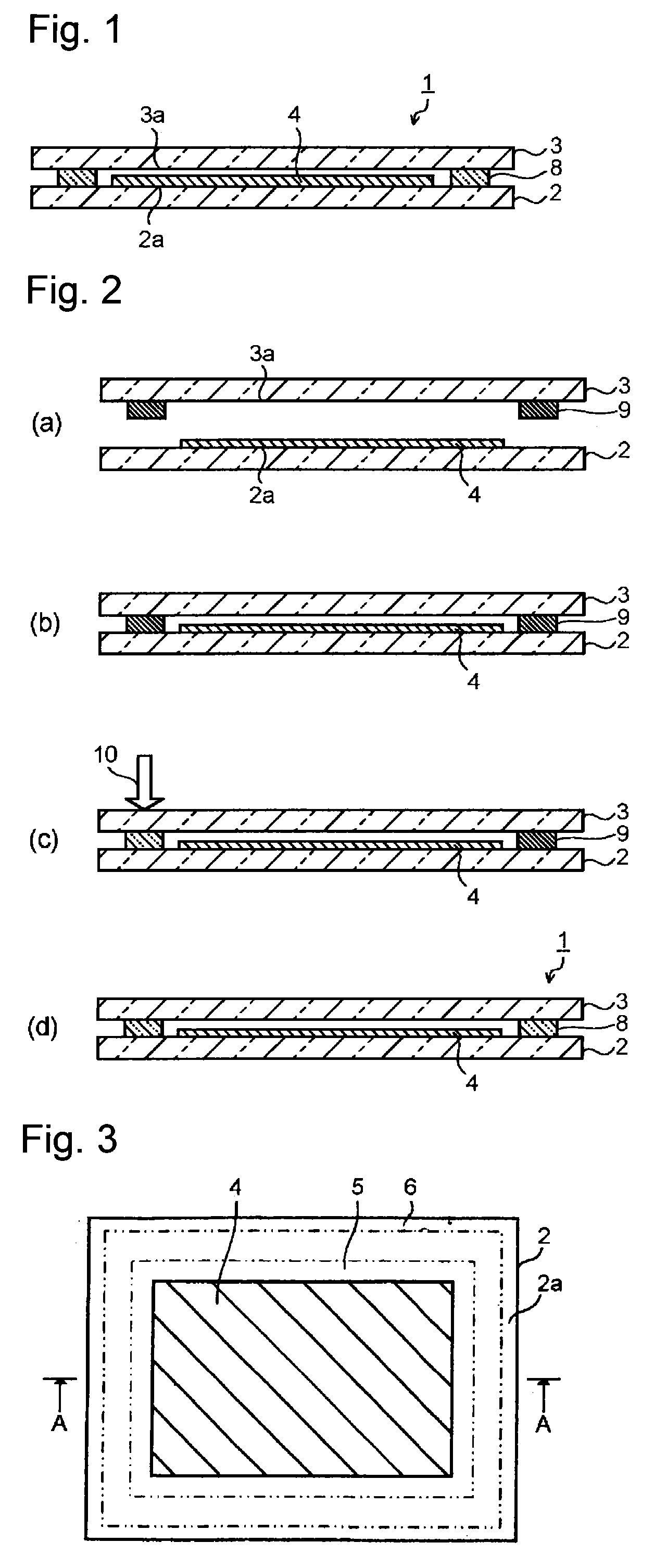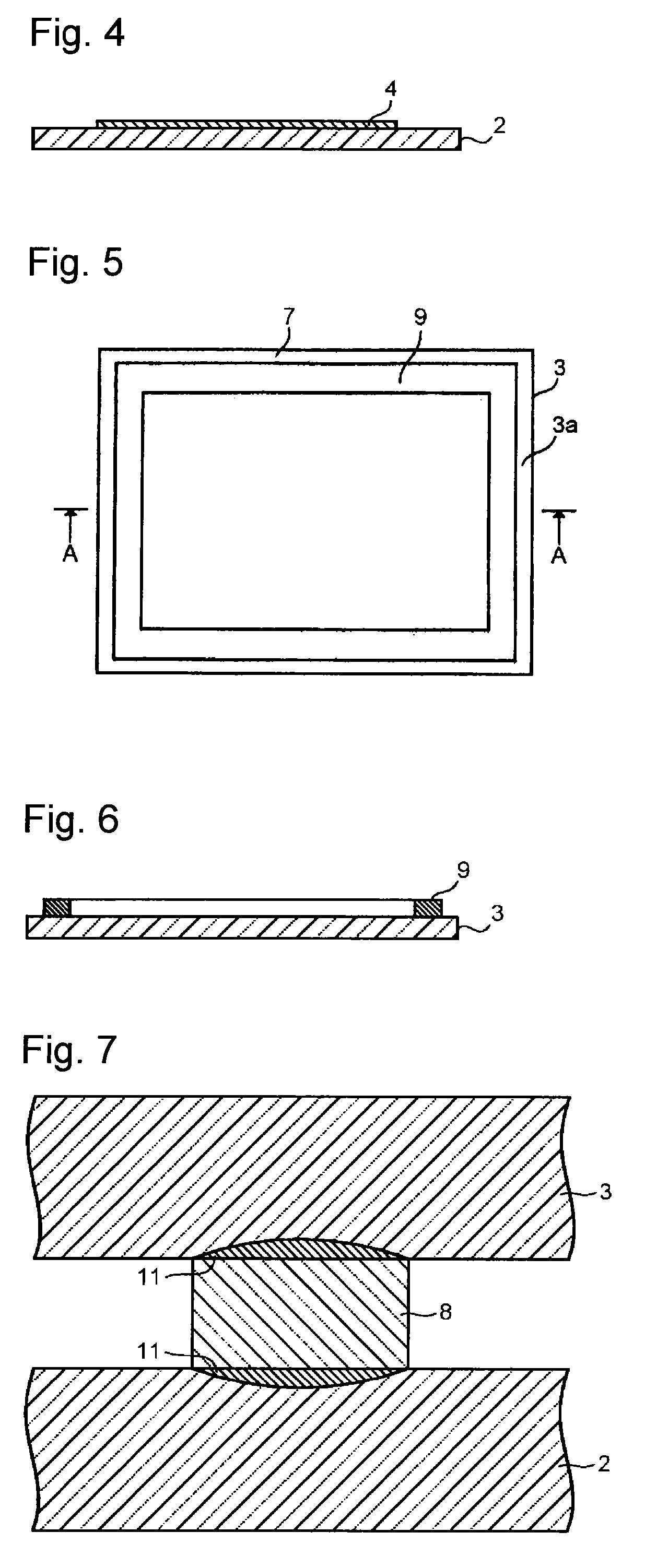Electronic device and method for manufacturing same
- Summary
- Abstract
- Description
- Claims
- Application Information
AI Technical Summary
Benefits of technology
Problems solved by technology
Method used
Image
Examples
example 1
[0076]First, a bismuth glass frit (softening point: 420° C.) having a composition including 83% of Bi2O3, 5.5% of B2O3, 11% of ZnO and 0.5% of Al2O3 by mass proportion, and further including 12 ppm of Na2O by mass proportion, cordierite powder as a low-expansion filler, and a laser absorbent, as an electromagnetic wave absorption material, having a composition including 24% of Fe2O3, 22% of CuO, 20% of Al2O3 and 34% of MnO by mass proportion were prepared. The content of Na2O was analyzed by ICP. Although the total amount of the main components is represented as 100 mass % with regard to the composition ratio of the bismuth glass frit for descriptive purposes, the amount of Na2O as a minor component is contained in the total of the components of the sealing glass (100 mass %).
[0077]68 vol % of the bismuth glass frit, 25 vol % of the cordierite powder and 7 vol % of the laser absorbent were mixed to prepare a sealing material (thermal expansion coefficient: 71×10−7 / ° C.). By mixing 8...
example 2
[0080]The formation of a sealing material layer and the sealing of a first glass substrate and a second glass substrate by use of laser light were carried out in the same manner as in Example 1 except that a bismuth glass frit containing 100 ppm of Na2O by mass proportion (softening point: 420° C.) was used. The sealing material layer had a temperature of 650° C. during irradiation of the laser light as in Example 1. An electronic device having the glass panel thus fabricated was subjected to the property evaluation described later.
example 3
[0081]The formation of a sealing material layer and the sealing of a first glass substrate and a second glass substrate by use of laser light were carried out in the same manner as in Example 2 except that the laser light had an output of 28 W (output density: 1,393 W / cm2). The sealing material layer had a temperature of 730° C. during irradiation of the laser light. This heating temperature corresponds to (T+310° C.). An electronic device having the glass panel thus fabricated was subjected to the property evaluation described later.
PUM
| Property | Measurement | Unit |
|---|---|---|
| Fraction | aaaaa | aaaaa |
| Percent by volume | aaaaa | aaaaa |
| Percent by volume | aaaaa | aaaaa |
Abstract
Description
Claims
Application Information
 Login to View More
Login to View More - R&D
- Intellectual Property
- Life Sciences
- Materials
- Tech Scout
- Unparalleled Data Quality
- Higher Quality Content
- 60% Fewer Hallucinations
Browse by: Latest US Patents, China's latest patents, Technical Efficacy Thesaurus, Application Domain, Technology Topic, Popular Technical Reports.
© 2025 PatSnap. All rights reserved.Legal|Privacy policy|Modern Slavery Act Transparency Statement|Sitemap|About US| Contact US: help@patsnap.com



